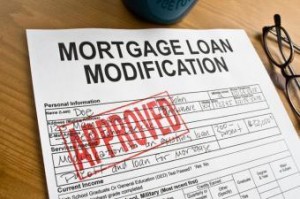 During the Great Recession millions of homeowners went through the foreclosure process or the process of modifying their mortgages, either directly through banks or with the help of federal programs like the Home Affordable Modification Program (HAMP). Additionally, some homeowners saw the value of their homes plummet, leaving them underwater. But according to CoreLogic, since the crisis, foreclosures have slowed, and the total number of underwater homes has dropped by half from 11.6 million in 2011 to 4.3 million last year.
During the Great Recession millions of homeowners went through the foreclosure process or the process of modifying their mortgages, either directly through banks or with the help of federal programs like the Home Affordable Modification Program (HAMP). Additionally, some homeowners saw the value of their homes plummet, leaving them underwater. But according to CoreLogic, since the crisis, foreclosures have slowed, and the total number of underwater homes has dropped by half from 11.6 million in 2011 to 4.3 million last year.
A recent report from Credit.com [1], though notes this is not to say the housing market is out of the water, or that consumers who have trouble paying their mortgages don’t need help navigating the process. Solutions span forbearance and modifications to home-disposition options, and each of these is complicated.
“The foreclosure prevention programs established by Treasury, HUD and FHFA in response to the financial crisis have transformed the way in which the mortgage servicing industry has interacted with and assisted struggling homeowners,” Mark McArdle, Deputy Assistant Secretary for the Office of Financial Stability. “While MHA and other crisis-era homeowner assistance programs are ending, their impact will endure. Servicers and investors will need to leverage new or existing loss mitigation programs, but they should build on the best practices and guiding principles that have led to positive outcomes for all parties.”
The Consumer Financial Protection Bureau issued non-binding guidelines for mortgage services when dealing with at-risk homeowners. This comes right around the time that HAMP is coming to an end thus the Bureau refers to the guidelines as instructions for “Life After HAMP.”
“We aim to help consumers avoid foreclosures, which upset their personal and financial lives,” CFPB Director Richard Cordray said in a press release. “The modification program was put in place to provide alternatives to foreclosure. Our principles will serve as helpful guardrails for servicers, investors and regulators to consider as we continue to protect consumers who are struggling to pay their mortgages.”
The report from Credit.com states that the CFPB believes consumers are on more solid footing today than they were before the recession. It notes that these new rules make future mass defaults less likely. However, the report notes that the Bureau states, “there is ample opportunity for consumer harm if loss mitigation programs evolve without incorporating key learnings from the crisis.” The report says the CFPB identified four overriding principals that financial institutions should follow when dealing with at-risk homeowners including affordability, accessibility, sustainability, and transparency. Credit.com says the Bureau cites the main goal of the guidelines to preventing “avoidable foreclosures.”